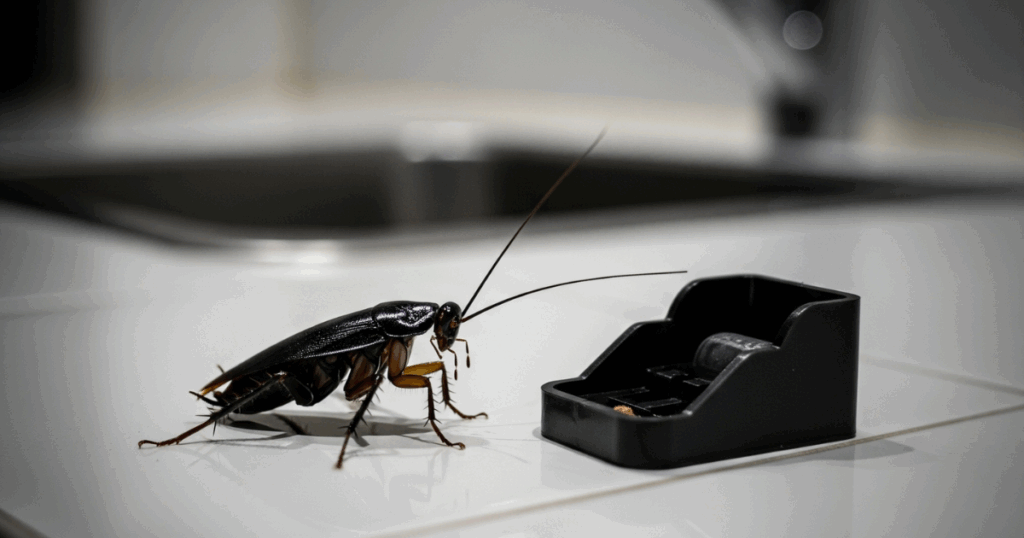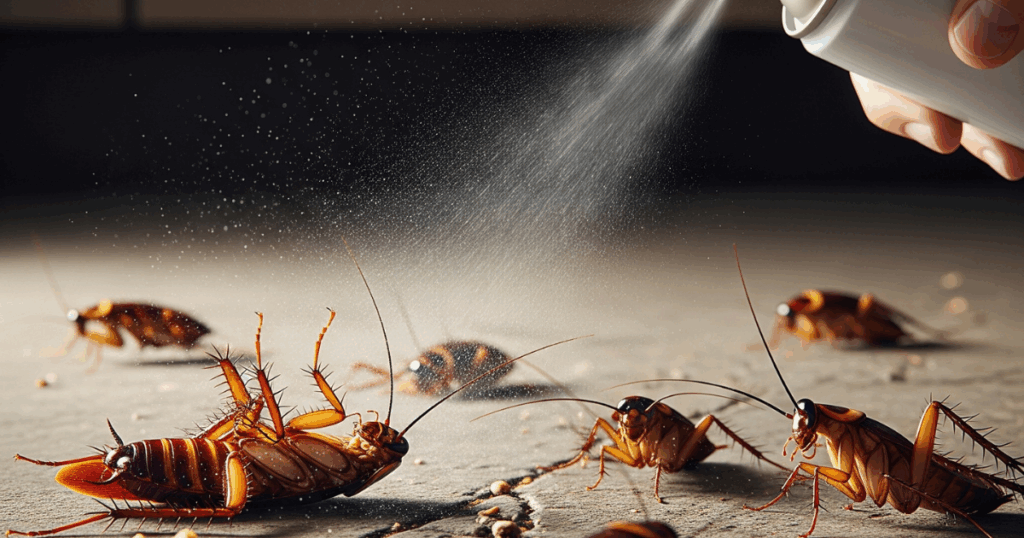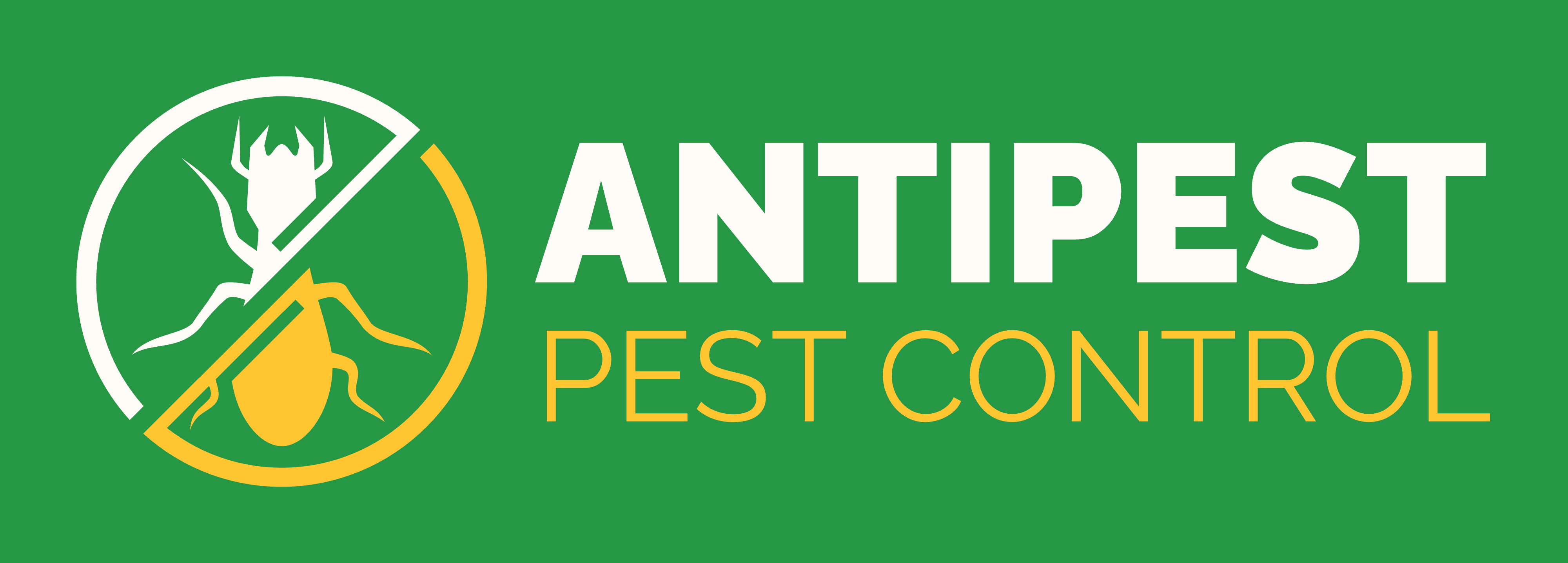When dealing with a cockroach infestation, proper identification is crucial for effective treatment. Understanding the German vs American cockroach differences helps homeowners choose the right elimination strategy. These two species are among the most common household pests, yet they require distinct approaches for successful control.
The German vs American cockroach comparison becomes essential when developing targeted pest management plans, as each species exhibits unique behavioral patterns and habitat preferences.
Table of Contents
German vs American Cockroach: Physical Differences

The German vs American cockroach comparison reveals significant physical distinctions that make identification straightforward.
Size Differences
The most obvious difference between German vs American cockroach species is their size.
- American cockroaches are the largest home-invading species, measuring 1.5 to 2 inches in length.
- In contrast, German cockroaches are much smaller, measuring only about half an inch long.
Color and Appearance
- German cockroaches are light brown with two distinctive dark stripes running from their heads to the ends of their wings.
- American cockroaches display a reddish-brown color with a thorax edged in faded yellow.
Wing Characteristics
- American cockroaches have very strong wings and can occasionally be seen flying, especially at night.
- German cockroaches, while having wings, rarely fly but can glide, especially males.
German vs American Cockroach: Habitat Preferences
Understanding where each species prefers to live is essential in the German vs American cockroach battle.
German Cockroach Habitats
German cockroaches strongly prefer indoor environments, making them the most common household pest. They are dependent on human activity indoors to survive and typically exist within about 3 meters or less of their harborage area. They gravitate toward warm areas and are typically found in:
- Kitchens and bathrooms
- Near appliances with motors like refrigerators, stoves, and microwaves
- Behind equipment with heat sources
- Under sinks and inside cabinets
- Areas around stove and refrigerator in kitchens usually have the largest numbers
American Cockroach Habitats
American cockroaches prefer hot, humid conditions and are commonly found outdoors in landscaped areas, sewers or storm drains. They prefer:
- Basements and crawl spaces
- Dark, moist areas in sewers and steam heat tunnels
- Around drains and plumbing
- Damp areas where moisture levels are higher
- Outdoors in warm climates, under dead logs and in wood piles
Behavioral Differences: German vs American Cockroach
German and American cockroaches show distinct behavioral differences. German cockroaches are mostly indoor pests that hide well, are nocturnal, have a fast reproduction rate, and rely on social feeding. American cockroaches prefer outdoor environments, are highly mobile, can glide, survive longer without food or water, and use pheromones for aggregation and seasonal migration. Below is more detailed version of Behavioral Differences between German vs American Cockroach
German Cockroach Behavior
German cockroaches exhibit unique behavioral patterns that distinguish them from American species:
- Exceptional Hiding Ability: They can flatten their bodies and squeeze through cracks you never knew existed
- Nocturnal Activity: These creatures prefer to move around in darkness and come out looking for food during dark hours
- Social Feeding: About 80% of a typical German cockroach population consists of immatures that rarely leave hiding spots, relying on adults to find food and return
- Omnivorous Diet: They eat a wide range of human foods, pet food, fruit, leather, book bindings, and even feed on dead bodies and excrement of other cockroaches
- Coprophagy: Consumption of fecal material is well-documented, especially among early instars who stay at aggregation sites
- Rapid Reproduction: They mature very quickly within 45 days and can produce over 30,000 offspring annually.
American Cockroach Behavior

American cockroaches display different behavioral characteristics:
- Outdoor Preference: Primarily outdoor pests that feed on plant and decaying organic matter
- Mobile and Fast: Very mobile, travel quickly, and may dart into small cracks when humans enter rooms
- Gliding Flight: When threatened, adult males can glide for extended distances
- Longer Survival: Adults can live at least 2-3 months without food and a month without water
- Seasonal Migration: Often observed migrating from one building to another during warm months
- Pheromone Communication: Use pheromones to select the best locations for aggregating, allowing multiple generations to coexist.
German vs American Cockroach Comparison Table
| Feature | German Cockroach | American Cockroach |
| Size | ½ inch | 1.5-2 inches |
| Color | Light brown with dark stripes | Reddish-brown with yellow margins |
| Preferred Location | Indoor (kitchens, bathrooms) | Basements, drains, outdoors |
| Flying Ability | Rarely flies, can glide | Strong fliers, especially at night |
| Frequency | Most common household species | Less common indoors |
| Reproduction Rate | Highest reproductive rate among domestic species | Slower reproduction cycle |
| Temperature Tolerance | Cannot survive freezing outdoors | Can survive outdoor freezing temperatures |
Advanced Signs of Cockroach Infestation
Since cockroaches are primarily nocturnal, identifying an infestation requires looking for specific warning signs beyond the basic indicators.
Most Common Signs of Cockroaches:
- Roach Droppings/Roach Poop: German vs American cockroach droppings differ slightly – German cockroach waste resembles coffee grounds, while American cockroach feces are larger and more cylindrical
- Cockroach Eggs: German cockroaches produce egg cases containing 30-50 nymphs, while American cockroaches create cases with up to 16 eggs
- Smear Marks: Both German and American cockroaches leave greasy, dark smears along walls and surfaces
- Roach Skins: Multiple shed exoskeletons indicate active populations
- Property Damage: Contaminated food, damaged book bindings, and stained surfaces
- Unpleasant Smell: German cockroaches produce odorous secretions that can affect food flavors when populations are high
- Live Cockroaches: Daytime sightings often indicate overcrowding and significant infestations
Why Are Cockroaches Such a Serious Problem?
German and American cockroaches pose severe health risks that extend far beyond their unsightly appearance.
- Disease Transmission: Both species mechanically transmit diseases including Salmonella and E. coli picked up from their environments
- Allergic Reactions: Cockroach allergens can trigger asthma attacks, especially in children
- Food Contamination: Their omnivorous nature leads to sampling of decomposing material, breadcrumbs, and organic waste
- Respiratory Issues: Shed skins and droppings worsen asthma symptoms
- Intestinal Parasites: Pets can develop parasites if they ingest cockroaches
Why German vs American Cockroach Infestations Persist?
The German vs American cockroach problem stems from their incredible adaptability and different survival strategies:
- German cockroaches have the highest reproductive rate among domestic species and mature within 45 days
- American cockroaches can survive months without food and easily withstand freezing temperatures
- Both species have survived for over 300 million years and can develop resistance to insecticides
- They communicate through pheromones and establish multiple hiding locations
Prevention Strategies: German vs American Cockroach Control
Effective German vs American cockroach prevention requires a comprehensive three-pronged approach focusing on sanitation, moisture control, and structural modifications. Sanitation control involves immediately removing food residues, thoroughly cleaning all surfaces, daily vacuuming, and maintaining tightly sealed garbage bins to eliminate the food sources that attract both cockroach species.
Moisture management is equally critical, requiring homeowners to fix all leaks, eliminate standing water sources, regularly clean drains and garbage disposals, and use dehumidifiers in damp areas like basements and kitchens since both German vs American cockroach species depend on moisture for survival and reproduction.
Universal Prevention Methods
Effective German vs American cockroach prevention requires comprehensive approaches:
Sanitation Control:
- Remove food residues immediately and clean surfaces thoroughly
- Wipe down surfaces, move appliances for deep cleaning, and vacuum floors daily
- Empty garbage bins regularly and ensure tight sealing
Moisture Management:
- Fix leaks and eliminate standing water sources
- Maintain drains and garbage disposals with regular cleaning
- Use dehumidifiers in damp areas like basements and kitchens
Structural Modifications:
- Seal cracks and crevices around plumbing and baseboards
- Update door sweeps and weather stripping
- Remove cardboard and paper clutter that provides hiding places
Species-Specific Prevention
These German vs American cockroach prevention strategies reflect each species’ distinct habitat preferences and behaviors, with German cockroaches requiring intensive indoor management around food and warmth sources, while American cockroaches need comprehensive outdoor perimeter control and moisture elimination to prevent indoor migration.
German Cockroach Prevention:
- Focus on kitchen and bathroom areas where they prefer to live
- Use monitoring traps within 3 meters of suspected harborage areas
- Target warm equipment like appliances with motors
- Store food in sealed containers and avoid leaving dishes overnight
American Cockroach Prevention:
- Address outdoor moisture sources and drainage issues
- Inspect items before bringing them inside, especially boxes and packages
- Focus on basement and crawl space moisture control
- Remove outdoor debris like wood piles and dead logs
Advanced Treatment Methods for German vs American Cockroach Elimination

Professional German vs American cockroach elimination requires species-specific approaches that address each pest’s unique biology and behavior patterns. Effective treatment combines targeted gel baiting strategies, integrated pest management protocols, and environmental modifications tailored to German cockroaches’ indoor preferences and American cockroaches’ outdoor-to-indoor migration patterns.
These advanced methods ensure comprehensive control by understanding population dynamics, communication pathways, and habitat requirements specific to each German vs American cockroach species.
Professional Treatment Protocols
Professional Treatment Protocols utilize species-specific gel baiting strategies, with German cockroach baits placed strategically within their 3-meter movement range near harborage sites, while American cockroach baits are positioned in basement areas and moisture sources, considering each species’ distinct behavioral patterns.
Species-Specific Gel Baiting:
- German cockroach baits placed near harborage sites within their 3-meter movement range
- American cockroach baits positioned in basement areas and near moisture sources
- Strategic placement considering behavioral differences between species
Integrated Pest Management Approach:
- Use of monitoring systems like sticky traps to identify hot spots
- Treatment of 20% adult and 80% immature population dynamics in German cockroaches
- Targeting of pheromone communication pathways in American cockroaches
Environmental Modifications:
- Reducing harborage capacity which limits German cockroach populations more than food availability
- Addressing outdoor moisture sources that attract American cockroaches
- Temperature control in areas preferred by each species
Natural Deterrents and Supplementary Methods To Get Rid Of German vs American Cockroach?
Essential Oil Treatments using peppermint, tea tree, or eucalyptus oils mixed with water and sprayed at entry points serve as natural repellents but work better as preventive measures rather than elimination tools for both German vs American cockroach species.
Natural Supplementary Methods can support professional German vs American cockroach control but are not standalone solutions, as they primarily deter rather than eliminate established populations.
Essential Oil Treatments
Essential Oil Treatments using peppermint, tea tree, or eucalyptus oils mixed with water and sprayed at entry points serve as natural deterrents for both German vs American cockroach species, creating aromatic barriers that cockroaches typically avoid.
These German vs American cockroach repellent methods work better as preventive measures rather than elimination tools, providing eco-friendly supplementary protection when combined with professional pest management programs for comprehensive cockroach control.
- Peppermint, tea tree, or eucalyptus oils mixed with water and sprayed at entry points
- These methods work better as preventive measures rather than elimination tools
Environmental Controls
Diatomaceous Earth and Boric Acid applied in cracks, crevices, and wall voids provide natural mechanical and residual control that damages cockroach exoskeletons and targets populations of both German vs American cockroach species when professionally applied.
Temperature Management disrupts breeding cycles by creating unfavorable conditions that slow reproduction and reduce survival rates for both German vs American cockroach species, particularly effective when combined with moisture control for comprehensive environmental pest management.
- Diatomaceous earth applied in cracks and crevices
- Boric acid dust in wall voids (professional application recommended)
- Temperature management to disrupt breeding cycles
Long-Term Management: German vs American Cockroach Control
Successful German vs American cockroach control requires systematic monthly monitoring, seasonal assessments, and detailed activity documentation to detect early reinfestation signs. Preventive maintenance includes quarterly professional inspections, annual structural assessments, and continuous sanitation protocol adherence to eliminate favorable conditions for both species.
Effective long-term management ensures that environmental conditions remain unfavorable for cockroach establishment while providing early warning systems for prompt intervention when needed.
Monitoring and Maintenance
Successful German vs American cockroach prevention requires systematic monitoring through monthly trap checks in key areas, seasonal assessments of moisture levels and entry points, and detailed documentation of any new activity patterns.
- Regular Inspections:
- Monthly monitoring trap checks in key areas
- Seasonal assessments of moisture levels and entry points
- Documentation of any new activity patterns
Preventive Maintenance:
Effective German vs American cockroach control requires ongoing vigilance through quarterly professional inspections and treatments, annual structural assessments for new vulnerabilities, and continuous sanitation protocol adherence.
- Quarterly professional inspections and treatments
- Annual structural assessments for new vulnerabilities
- Continuous sanitation protocol adherence
Economic Impact Considerations
German vs American cockroach infestations create significant financial burdens through food contamination and waste, property damage to books, electronics, and furnishings, healthcare costs from allergic reactions and respiratory issues, and professional treatment expenses that prove more cost-effective than DIY attempts.
- Food contamination and waste
- Property damage to books, electronics, and furnishings
- Healthcare costs from allergic reactions and respiratory issues
- Professional treatment expenses (more cost-effective than DIY attempts)
Conclusion
Understanding the German vs American cockroach differences is fundamental to successful pest management. While German cockroaches prefer indoor environments, reproduce rapidly, and stay close to harborage areas, American cockroaches are larger, more mobile, and often originate from outdoor sources. Both species pose serious health risks through disease transmission, allergen production, and food contamination.
For comprehensive and hassle-free German vs American Cockroach removal and long-term pest prevention, trust the professionals at Antipest Office. Visit us at the Antipest Office, Our trained technicians use safe and effective methods to protect your home and business. For service bookings and consultations, call us at +91 9819018398 .
Difference between German vs American Cockroach? – FAQs
What is the main difference between German and American cockroaches?
German cockroaches are smaller and lighter brown, while American cockroaches are larger and reddish-brown.
Which cockroach is more common indoors?
German cockroaches are more commonly found indoors, especially in kitchens and bathrooms.
Are American cockroaches more dangerous than German cockroaches?
Both can spread disease, but German cockroaches reproduce faster, making them harder to control.
How big are German cockroaches?
German cockroaches are typically around 1/2 to 5/8 inches long.
How big are American cockroaches?
American cockroaches can grow up to 1.5 to 2 inches in length.
Do both cockroaches fly?
American cockroaches can glide or fly short distances; German cockroaches rarely fly.
Where do German cockroaches usually hide?
They prefer warm, humid, and tight spaces near food sources, like under sinks or behind appliances.
Where do American cockroaches usually hide?
They live in dark, damp places like basements, drains, and sewers.
Which cockroach reproduces faster?
German cockroaches reproduce more rapidly, leading to faster infestations.
How can I tell if I have German or American cockroaches?
Check size, color, and habitat, small light brown roaches indoors are likely German; large reddish roaches near drains are likely American.

